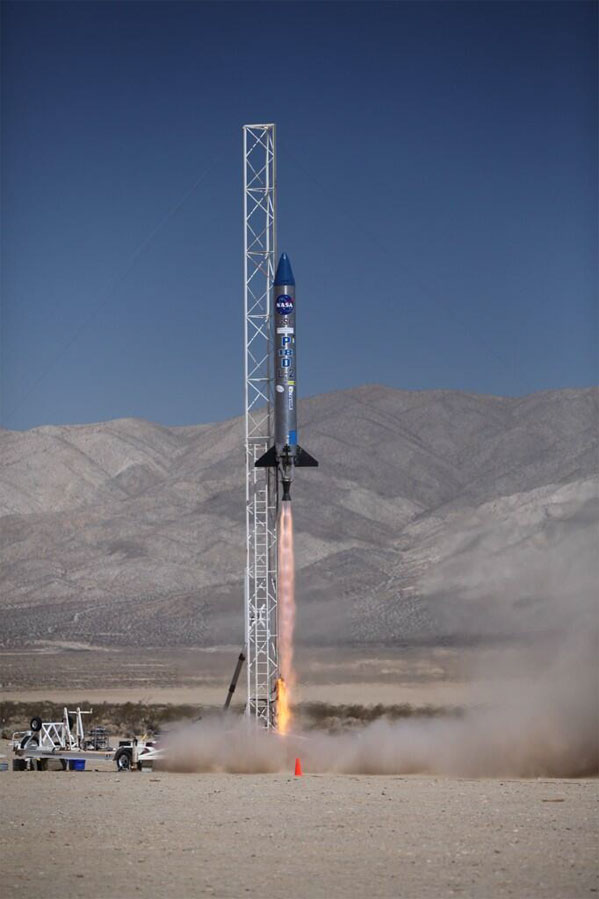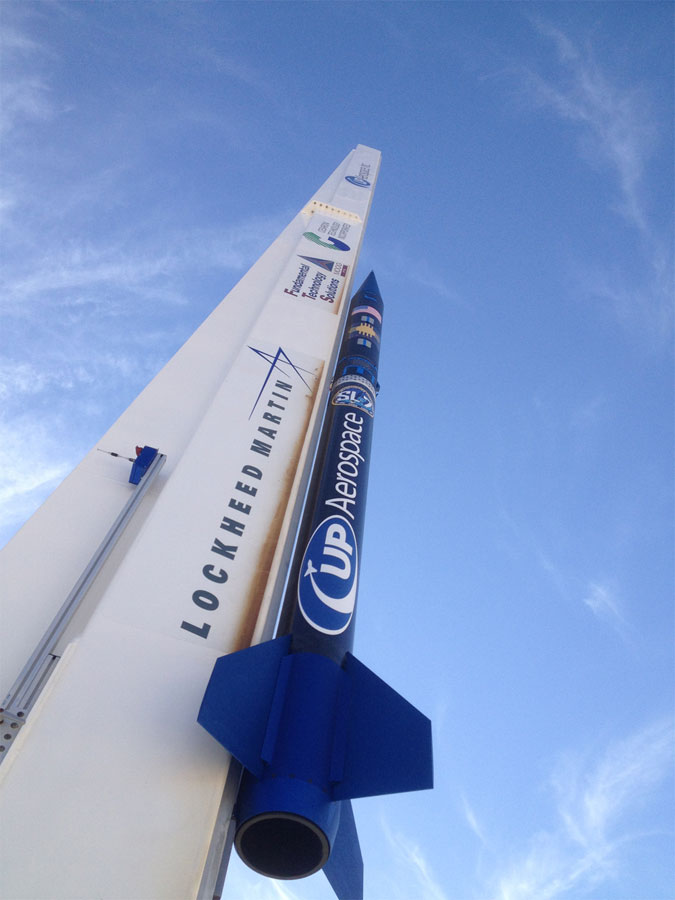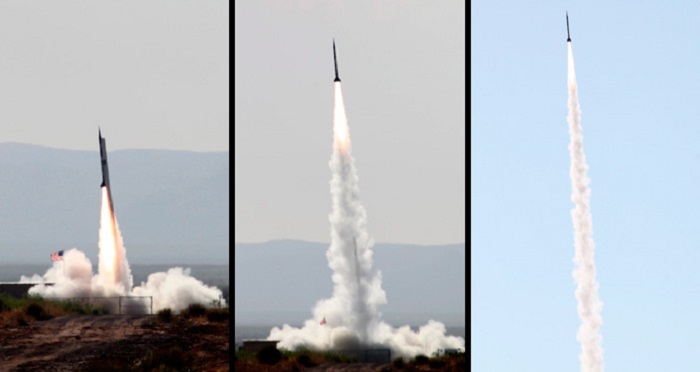.


Rocket Launch From Spaceport Succesful

A NASA rocket was successfully propelled on a suborbital mission in what was described as a spectacular launch from Spaceport America early this morning. The craft carried nine payloads containing scientific experiments from students across New Mexico, as well as from the Federal Aviation Administration and the U.S. Department of Defense.
The rocket sailed 74 miles into the air and also contained the cremated remains of dozens of people, including the late Hatch Mayor, Judd Nordyke.
Less than two hours after takeoff, a parachute recovery system brought the rocket safely back to earth. It was recovered intact over 20 miles downrange on White Sands Missile Range. The flight marks the 19th launch from the state-owned Spaceport.
.

Up Aerospace shot its NASA-funded rocket into space Friday morning without a flaw from Spaceport America in southern New Mexico.
“It was a perfect flight,” said UP President and CEO Jerry Larson. “We hit a new altitude record, and it came back down right in the target area at White Sands Missile Range. We went straight to it in an Army helicopter, recovered the payloads and gave them back to the payload customers right there on the spot.”
Larson said the mission’s success bodes well for more NASA-funded flights from the spaceport. This was the first of eight payload-bearing rockets that UP was selected to provide under a $4.7 million contract with NASA’s Flight Opportunities Program, which pays aerospace companies for suborbital flights to test new technologies in space.
The rocket, dubbed the SpaceLoft, carried seven payloads with scientific experiments designed by NASA, other federal agencies and private companies, as well as educational experiments from New Mexico students.
Spaceport Authority Executive Director Christine Anderson said a few hundred people attended the launch, including about 300 students and others involved in the educational experiments, plus about 90 people from the agencies and companies that sent up other payloads.
In addition, about 140 relatives of deceased people whose ashes flew on the rocket attended the event. Celestis Inc., a commercial company that offers “memorial spaceflights” for people’s remains, placed the ashes on the SpaceLoft.
“It was very special to have all these people here today,” Anderson said. “The spaceport is not only about having successful launches. It’s about being able to share all this with everybody.”
Friday’s launch was the seventh time UP has flown its SpaceLoft rocket design from Spaceport America since 2006. In fact, it’s the fifth time UP has shot the same rocket into space, since the company has steadily improved the vehicle’s structure after each flight to turn it into a reusable rocket for suborbital missions.
“It took the first three SpaceLoft flights to eliminate the kinks and get to the reusable point, but it’s been working flawless ever since,” Larson said.
That’s essential to manage NASA missions, since the agency requires that suborbital vehicles that fly payloads under the Flight Opportunities Program be at least 80 percent reusable. That helps reduce costs, allowing more scientific experiments to get to space faster.
Rocket reusability is also critical for the success of the emerging commercial space industry including Spaceport America in general.
“As a business, reusability is where you can save a lot of money,” Larson said. “You don’t need to buy new hardware and rebuild the rocket over and over again.”
The SpaceLoft is now 87 percent reusable, with only the booster burning up during flight.
Apart from UP, two other companies are working at the spaceport to develop reusable vehicles. Texas-based Armadillo Aerospace is conducting low-altitude test flights there to gather data to build a reusable, vertically launched passenger rocket that it eventually plans to fly to space. Its last test flight was Jan. 5.
Space Exploration Technologies Corp., which flies cargo spaceships to the International Space Station for NASA, will soon conduct flight tests at the spaceport for a reusable passenger rocket it’s developing. The Spaceport Authority is now constructing a new vertical launch pad for the company.
With Friday’s flight over, UP is preparing for its next NASA flight, scheduled for Oct. 9.
“The success of this mission helps keep the ball rolling,” Larson said. “Now we’ll focus on the October launch. Our job is to do successful missions one right after another to allow NASA to keep doing scientific experiments at the spaceport.”
.
Quelle:ABQ
